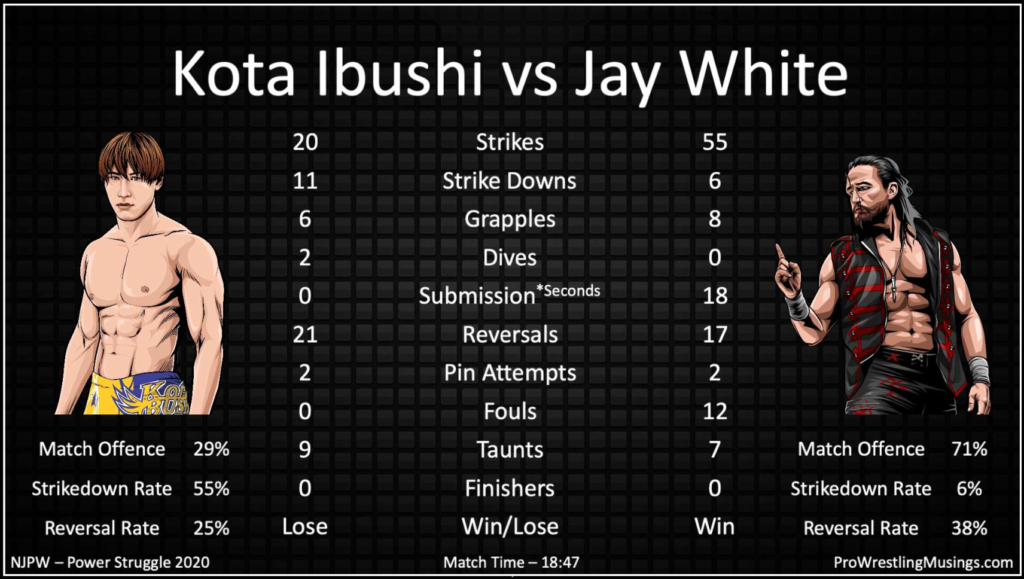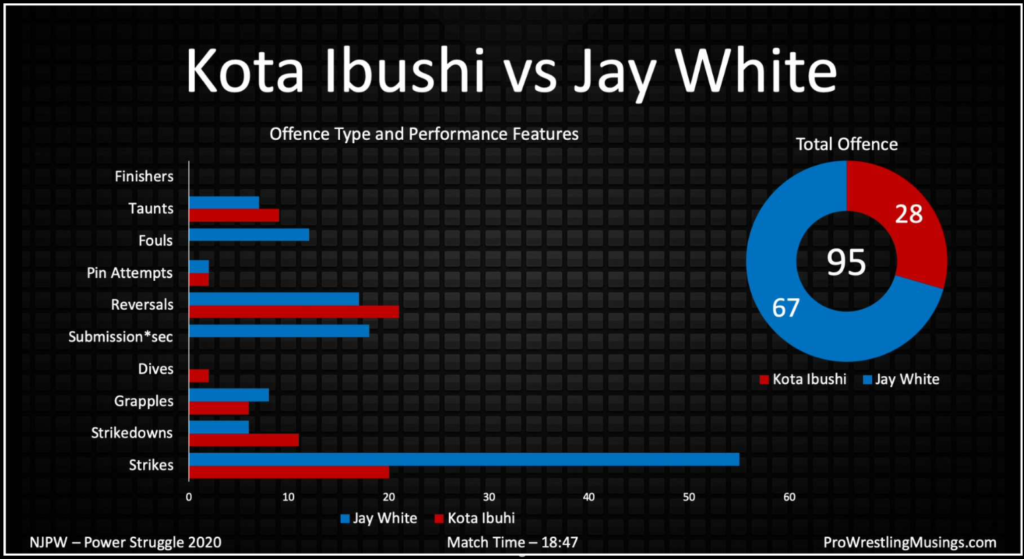By: Craig William, ProWrestlingMusings.com
In 2018, Kota Ibushi got to the final of the G1 after winning his block and was denied what would have been an incredibly special clash with Kenny Omega at Wrestle Kingdom 13. Hiroshi Tanahashi went on to face Kenny Omega and the 1 on 1 showdown between Omega and Ibushi for the title never happened.
Then in 2019 he righted that wrong, somewhat, and defeated Jay White in the final of the G1 Climax to, in theory, set up a clash with Kazuchika Okada for the IWGP Heavyweight Championship. However this G1 victory was somewhat distilled by talk of ‘Double Gold’ leading to Tetsuya Naito and Jay White joining Okada and Ibushi in a two day tournament at the 2-day Wrestle Kingdom 14 event. At which Ibushi would fail to defeat Okada on the first night and would be humbled by that man again, Jay White.
Fast-forward to 2020, under extraordinary circumstance Kota Ibushi achieved an extraordinary feat by making the G1 final for the third year in a row and winning the entire G1 for the second year in a row. However whilst doing that he lost a block match to Jay White, giving White the opportunity to challenge him for the briefcase. This is normal, in fact it had happened 16 times previous and the momentum of the G1 winners of the past had always allowed them to vanquish their challengers on each of those 16 times. Surely 2020 wouldn’t manage to ruin Kota Ibushi’s storied quest to finally win the IWGP Heavyweight championship at Wrestle Kingdom 15 in 2021? Wrong.
Throughout the G1, Kota Ibushi tended to take more damage than he dished out and this trend continued into this match. In fact Jay White dominated the match to a point that at the end of all 18 minutes and 47 seconds of it he had accrued 71% of the offence. During the G1, Ibushi’s average percentage of match o fence was 45% (15th/20 competitors) and over the course of the tournament he took 129 offensive moves than he managed to hit his opponent with.

The big difference in offence in this match is the strikes with White almost trebling Ibushi’s tally. In the G1, Ibushi had a per hour strike rate of 205.4 (4th/20 competitors) which equates to 64.3 strikes for a 18:47 match. Meaning his total of 20 strikes against Jay White was substantially down from his G1 average. The other notable difference to his G1 run is his lack of submission use against Jay White. In the G1, Ibushi used the 13th most submission time out of the 20 competitors across both blocks with 60 seconds of submission per 60 minutes of wrestling. In this match you would expect 19 seconds if he was to match his G1 average as opposed to the zero he managed.
With all this being said, the elephant in the room really is those 12 fouls compared to Ibushi’s. In the G1, rule-breakers were not rewarded in the end with finalists Ibushi and SANADA using the 2nd and 4th least fouls in the tournament respectively. Yet at the end of this match Jay White won by utilising the ropes out of view of the referee.
Unfortunately in the world of professional wrestling cheating is a factor and wrestlers need to insulate themselves from falling victim to this by performing at an elite level. Had Kota Ibushi performed better in the ring against Jay White at Power Struggle, he may still have the IWGP title shot at Wrestle Kingdom and the opportunity to right the wrongs of the past 2 years.
Hopefully all is not lost for Kota Ibushi and he can find a way to regain what Jay White has stolen from him.
For all the statistics from the G1 Climax 30 check out Craig’s comprehensive work over at prowrestlingmusings.com

This article first appeared in Monthly Puroresu Issue #2
Date:
November 20, 2020
Category:
The Midcard